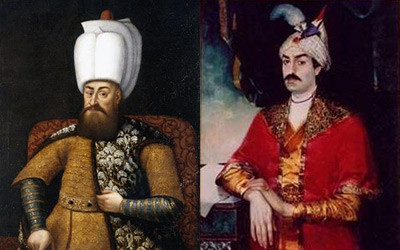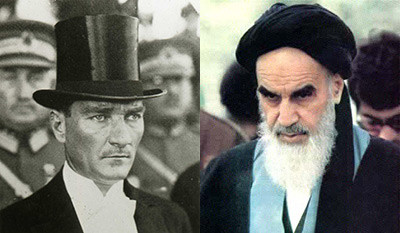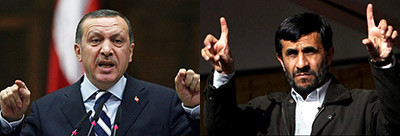By ARTHUR HERMAN
The military-industrial complex. The chilling phrase conjures up rows of gleaming ICBM's and B-52 Stratofortress bombers and nuclear submarines—or the mad Gen. Jack Ripper in the movie "Doctor Strangelove." Most people know that the phrase comes from President Eisenhower's Farewell Address of Jan. 17, 1961, in which he declared: "In the councils of government, we must guard against the acquisition of unwarranted influence, whether sought or unsought, by the military-industrial complex." He warned that "only an alert and knowledgeable citizenry" could keep America's "huge industrial and military machinery of defense" from becoming a potential threat to liberty and peace.For liberals, Eisenhower's speech, especially that encapsulating phrase, turned Ike from a figure of fun into a revered prophet. Even the radical Port Huron Statement, issued in 1962, picked the phrase up. The "military-industrial complex" became a part of the rhetoric of the student movement—and has remained a part of the thought process of America's intelligentsia ever since.
Figuring out what Eisenhower meant by the military-industrial complex—and whether he was right to see it as something to be guarded against—is one of James Ledbetter's many tasks in "Unwarranted Influence." Exactly how the MIC (as we might abbreviate it) operates is the avowed subject of William Hartung's "Prophets of War," a scathing portrait of Lockheed Martin, America's largest defense contractor.
After World War I, it became popular to assert that the world's munitions makers, "the merchants of death," promoted wars to enhance their own profits—the most glaring example of how "capitalism kills." Mr. Ledbetter recognizes that such claims were ill-founded, even absurd: after all, the country that wound up with the biggest and costliest MIC of all was the communist Soviet Union. Still, he cannot resist joining the chorus of those who see the expansion of the Pentagon's budget during the Cold War as a grotesque and menacing development, one that made the world more perilous at the time and makes the future dangerously uncertain now.
What Mr. Ledbetter cannot explain is how this military buildup managed to check Soviet and Chinese expansion around the world, allowed Western Europe to unite and live in peace, and provided a nuclear deterrence without triggering the end of civilization (as critics predicted)—or ever once interrupted the flow of butter as well as guns.
Some would say it was an amazing achievement rather than a source of shame. But not Mr. Ledbetter. Instead, he insists that the MIC has blunted our moral sense and enabled adventurism. In recent years it has led to "the controversial detention center at Guantanamo Bay, the torture revealed in the Abu Ghraib prison; the privatization of security and combat as represented by the Blackwater firm; and the overruns in cost, length of engagement, and American lives" in Iraq.
It is hard to see what this litany has to do with the MIC per se, especially when the Pentagon's weapons-spending programs have steadily shrunk as a percentage of the federal budget to less than 20%, compared with 60% in Eisenhower's day, and when the defense industry itself is far from a dominant force in the nation's economy. Today you could buy all the Big Six defense contractors, including Lockheed Martin and Boeing, for roughly a 10th of the value of Microsoft. In any case, it is hard to imagine Eisenhower—the man who approved the CIA's overthrow of governments in Guatemala and Iran— losing much sleep over Gitmo.
Unwarranted Influence
By James LedbetterYale, 268 pages, $26
In the end, Mr. Ledbetter is forced to conclude that Eisenhower's worry about the MIC was part of a larger fear—about the growth of an arrogant and expensive federal government and the growth of federal debt. Would building more and bigger weapons systems, Eisenhower wondered, bankrupt the country?
In fact, it is social programs that now have the federal budget firmly in their grip and keep our deficits soaring. One could call the Pentagon's $685 billion measly compared with the continuing costs of Social Security, Medicare and Medicaid. Today the MIC barely registers at 4% of GDP; in Eisenhower's day it was nearly 10%, even after the Korean War. By Ike's own standards we should be spending at least twice what we are now spending on defense.
For Keynesians eager to push up aggregate demand with more "stimulus" money, defense spending is a win-win: Unlike high-speed rails to Las Vegas and windmill farms, the money spent on weapons and armaments goes directly into real economic goods and into the pockets of defense workers, including those at Lockheed Martin.
This public-private nexus bothers observers like Mr Hartung. Indeed, his picture of Lockheed in "Prophets of War" reads like the stuff of 19th-century muckraker journalism. Not that Lockheed has not encouraged such an approach: In 1974, a scandal broke about Lockheed executives bribing foreign officials, including Prince Bernhardt of the Netherlands and a Japanese prime minister, who wound up with a stiff prison sentence. But more generally Mr. Hartung paints a portrait of a company with tentacles everywhere, from the Pentagon and Congress to agents in foreign governments, a company that feeds the forces of militarism around the world and enriches itself in the process, especially through cost overruns.
Prophets of War
By William D. HartungNation Books, 296 pages, $25.95
Norman Augustine, a former Lockheed Martin president, is Mr. Hartung's bête noire. He portrays him as a "tough behind-the-scenes lobbyist" who has enriched himself and his company at the public trough. Yet it was Mr. Augustine, seeing the absurdity of the government's procurement process, who quipped that in the year 2054 the entire Pentagon budget will be spent to buy exactly one airplane, to be shared on alternate days by the Army, Navy and Air Force. It was not meant as a happy prediction.
As it happens, America's military- industrial complex developed in World War II as a way to save money, not squander it. Industrialists and military men learned that working together on plane and weapons designs made for better weapons at a faster pace, as battlefield experience got incorporated into existing designs. It also speeded the development of technologies that continue to spin off from the MIC, from radar and cellphones to the Internet (an outgrowth of the Pentagon's Advanced Research Projects Agency). Everyone complains about a bloated defense budget, yet history shows that a continuous, functioning MIC costs far less in lives and dollars than having to ramp up our military from scratch when a crisis hits.
From 1946 to 1950 a drastic downsizing of our military almost left us helpless to halt a communist takeover of Korea. After Vietnam, we were ill-prepared to confront the Soviets' Third World adventurism and its new interest in sea power. After the fall of the Berlin Wall there was a similar attempt to claim a "peace dividend." Each time the critics of "empire" argued that, at last, we could beat our swords into ploughshares. Those who disagreed were dismissed as alarmists or, more routinely, as shills with a vested interest in the status quo.
But we all have a vested interest in the status quo—a world in which the U.S. military assumes the awesome burden of acting as the world's policeman, from fending off rogue nations and knocking off terrorists with Predator drones to defending the sea lanes and global commons from pirates and assorted bad guys. The task of rebuilding a hollowed-out military is a daunting one. If we manage to appreciate the virtues of the "military-industrial complex," we won't have to face it again.
—Mr. Herman, a visiting scholar at the American Enterprise Institute, is writing a book on the arsenal of democracy.







